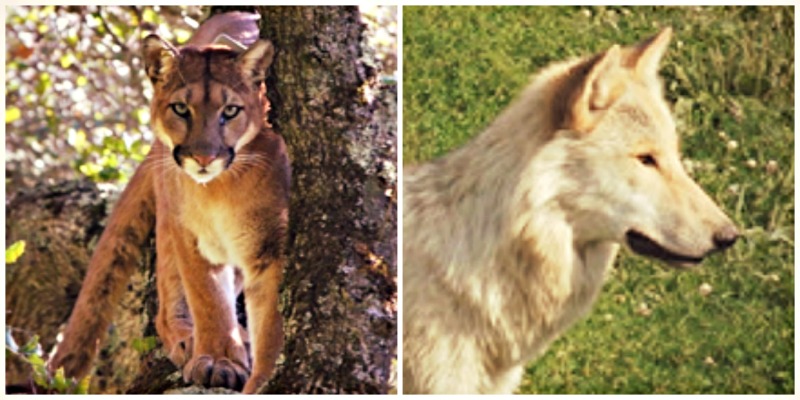This week we published Energetics and evasion dynamics of large predators and prey: pumas vs. hounds by Caleb M. Bryce, Christopher C. Wilmers, and Terrie M. Williams. The study used accelerometer-GPS collars to investigate the advantages and disadvantages of these two divergent hunting modes (“charge and chase” vs “surprise and subdue”). Author Caleb Bryce shares his thoughts below on the findings, the technological advances shaping ecology and field physiology plus the personal costs of collecting data surrounded by poison oak.
 Can you tell us a bit about yourself?
Can you tell us a bit about yourself?
I’m now a post-doctoral scholar and research coordinator at the Botswana Predator Conservation Trust, but I conducted the research in the PeerJ article as a component of my PhD (from the University of California, Santa Cruz). I was raised in Boston, but relocated to San Diego for my BS, where I had my first foray into large carnivore research and conservation. I spent two years (and an honors thesis) studying neotropical carnivore presence and abundance in Costa Rica, which inspired me to pursue a Masters and PhD researching apex predator ecology and physiology.
Can you briefly explain the research you published in PeerJ?
As a comparative physiologist, I seek to understand the nature of how animals function in a variety of habitats and environmental conditions. What do they need to survive, and how have they evolved to be able to meet those resource requirements? The work we published in PeerJ highlights the detailed movements, interactions, and energetics of peak performance by cursorial (i.e. dogs) and ambush (i.e. pumas) predators in the wild at fine patio-temporal scales. Our goal was to investigate the advantages and disadvantages of these two divergent hunting modes (“charge and chase” vs “surprise and subdue”) during maximal exertion using novel animal-born technology.

We found that when pursued, pumas utilized landscape features and evasive maneuvers to compensate for their slower average running speed. Additionally, on a pound-for-pound basis, escape bouts were much more energetically demanding for pumas than they were for the pursuing hounds, which ran nearly three times as far. We empirically demonstrate how the reconstruction of real-time predator-prey encounters can reveal physiological insights into direct interaction outcomes in large carnivores.
Do you have any anecdotes about this research?
The study area where the chases occurred was choked in poison oak. Each time I went out to the field to collect the chase data, I came back covered in it. Being highly allergic to poison oak, I would be in itchy misery for a few weeks. It was worth it though!
What kinds of lessons do you hope the public takes away from the research?
Evolved hunting mode differences mean that canids and felids experience different physiological abilities and constraints during peak performance (e.g. hunting or escaping). Animal-borne technology is advancing the frontiers of ecology and field physiology.
How did you first hear about PeerJ, and what persuaded you to submit to us?
A colleague of mine (Rachel Wheat) published one of her dissertation chapters in PeerJ a few years back, and spoke highly of the journal and the submission/peer review process.
How was your publishing experience with us?
Great and timely customer support, intuitive and nice submission interface.
How would you describe your experience of our submission/review process?
Easy…exactly how you want the submission/review process to be.
Would you submit again, and would you recommend that your colleagues submit?
Absolutely to both.
Anything else you would like to add?
I think that covers it!
Read the article: Energetics and evasion dynamics of large predators and prey: pumas vs. hounds.


